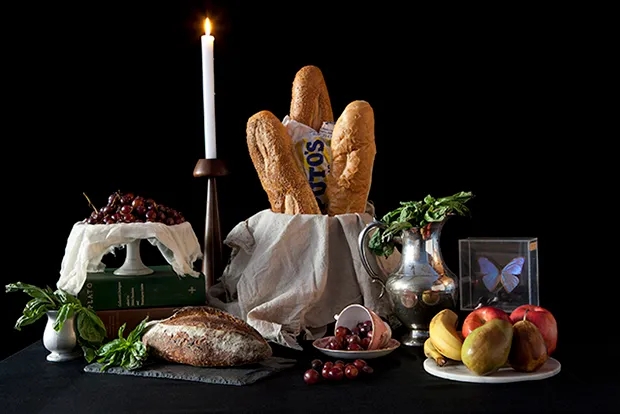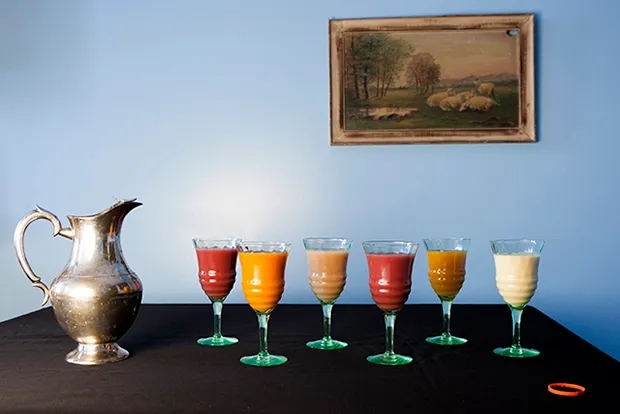
Fresh juices and Smoothies rescued from a dumpster at a distribution center filled with bottles of unopened fresh juices that have not expired yet but are possibly too close to expiration to be placed on the shelves. Food waste is a result of confusion over “use by”, “best before” and “sell-by” dates. – Greenpoint, Brooklyn.
Bread is the food item that gets thrown away most often. Americans waste 750,000,000 loaves of bread every year. The food shown above was all rescued from the curbside trash of a Cobble Hill market and bakery.
Food is thrown into dumpsters, and onto the streets of New York City as stores and markets close. Food rescuers, or “freegans” as they’re known, arrive around the same time to salvage often perfectly edible foods. The latest project of NYC-based Aliza Elizarov Waste Not shines the spotlight on food waste. It highlights the alarming statistic of $165 billion in food wasted in the US each year.
Eliazarov used food that was rescued from the trash to choreograph her photos. The gleaming orange flesh of the tomatoes, the moon-like glow of the cantaloupe against the black background, and the juice of the goblets all illustrate that these foods are not trash. Eliazarov encourages us to reconsider what we throw away and reduce waste to help the environment. She gives food originally intended for the trash a second life in her art. She arranges, takes the picture, and then eats.
From where did this project come?
The project was born from an assignment I received in 2011 for a newspaper to document a Harlem freegan doing a dive outside a Harlem market. When the food was taken from the trash to be placed on the sidewalk and curious pedestrians asked questions, they were most shocked at the amount of good food that had been wasted. This was a very insightful experience, which sparked an interest in me to learn more about food waste. In the United States, close to 40% of all food is wasted. The waste happens at every stage of the food journey, from farm to table. Food waste is a serious issue because of the widespread food insecurity, and climate change.
What did you do after you rescued the food?
For the freegan pictures, I used the NYC Freegan Directory to find dive spots in the city. As the project expanded, I wanted different aspects of food rescue, including gleaning and food banks. These photos were created in collaboration with a number of food rescue groups including City Harvest Food Bank, Food Forward and Chef Dan Barber’s WastED Pop Up. The food was consumed after the photos were taken.
Why did you present the food as if it were a 17th century painting?
I wanted to highlight the beauty of food that had been deemed garbage. The 17th century still-life paintings elevated food from objects of art. I wanted to elevate food in a similar way so it could be reexamined with this new lens.
What is the most shocking thing that you learned from working on this project
Every night, the streets of NYC line up with trash bags filled bagels and bread. There is SO MUCH bread waste.
